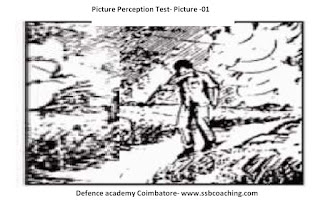How India bet Pakistan black and blue, with outdated technology and still WON!
ssb coaching
India has always been technologically lower than Pakistan in the past, but it is these brave men who protect us, and made us proud. As they say, it is not the machines that win, but men and women behind and the brave men who fight with their tactics, utmost bravery. Shame we can't even get them OROP. Here is one story during the 1965 War.
The armored battles which took place in this war were one of the largest tank battles in history since the Battle of Kursk in World War II.
As military historian Steven Zaloga puts it, what else could the Indians have named a place where the Pakistani Army lost 165 of its premiere Patton class tanks. Yes, there is a town named Patton Nagar in Khem Karan, Punjab because it was the very place the Indian army beat the Pakistani Army black and blue in one of the largest tank battles ever fought. The battle being the Battle of Asal Uttar.
Tensions between India and Pakistan have never fully gone away, but during the 1960s they were again at their highest. It was in 1965 that a full scale war occurred and Pakistan planned to take Amritsar and attempt to block supplies to the Indian Army stationed Jammu and Kashmir. They sought to take a bridge over the River Beas on the road to Jalandhar, which would prevent any supplies getting through.
The battle was so fierce & intense that at the end of the war, the 4th Indian Division (aka "The Fighting Fourth") had captured about 97 tanks in destroyed, damaged or intact condition. This included 72 Patton tanks and 25 Chafees and Shermans. 32 of the 97 tanks, including 28 Pattons, were in running condition. Indian losses in the Khem Karan sector were 32 tanks. Around 15 of them were captured by the Pakistan Army, mostly Sherman tanks.
 Destroyed tanks. Destroyed tanks.
The General of the Pakistani troops gave the orders to the 1st Armored Division. They immediately took Khem Karan, a town around five kms from the border.
As the attack took place Indian troops fell back and took a defensive position at the village of Asal Uttar, not far from Amritsar, from which they could attack the enemy.
The Pakistani tank division was more technologically advanced than the Indian troops and were advancing in over 300 US-produced tanks M-47 and M-48 Patton tanks. Meanwhile the Indians had less than half the same number of tanks and which were older, Sherman Tanks made during World War Two.
The Pakistanis had a false sense of security as they advanced towards Amritsar. But the Indian Army had flooded the nearby sugar cane fields with water in order to slow the advancing Pakistani tanks. It was then that they launched a massive counter attack.
The battle is now known as the ‘Battle of Asal Uttar’. The Indian Army ended up anhilating the entire Pakistani 1st Armoured Division leaving behind a field of destroyed tanks.

India again rose victorious thanks to valor of its men, but Veer Abdul Hamid destroyed 7 tanks and most with his rifle-less gun! Note the Param Vir Chakra is only given when it is considered to be something humanly impossible to do. For instance, UK's Victoria Cross has been given to a thousand recipients and also US's Medal of Honor.
India's highest award has only been given 21 times! It is so rare, 14 of them have been given posthumously.
One of the Indian soldiers, Quarter Master Havildar Abdul Hamid who was fighting with the Four Grenadiers Battalion single-handedly took our four enemy tanks and stopped them from advancing. As the enemy tanks tried to drive through and past the Indian defences Hamid took out three more tanks.
Hamid was killed during the battle but was posthumously awarded with the Param Vir Chakra, India’s highest military honour.
Military historians view the Battle of Asal Uttar as a pivotal point in the war of 1965 war, of which Pakistan never fully recovered.

Hundreds of destroyed Pakistani tanks!
India has always had lower tech than Pakistan in the past, but it is these brave men who protect us. Shame we can't even get OROP implemented!
Share this article, not for the sake of going viral but to get ordinary Indians who are more interested in Roadies and Katrina, to realise and fight for the justice of our men.
When together we fight, we will win.
JAI HIND.
|


Comments
Post a Comment